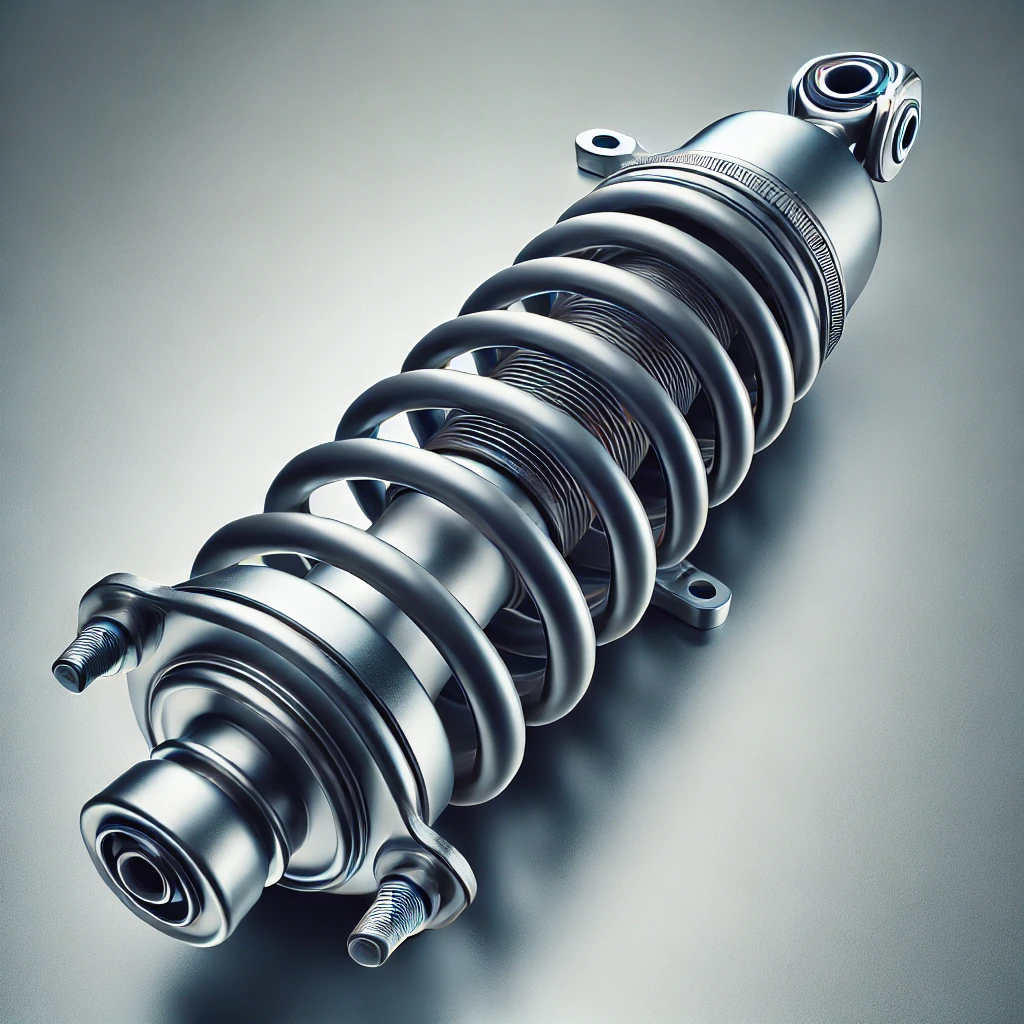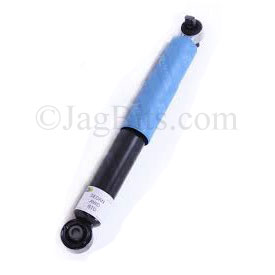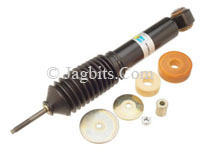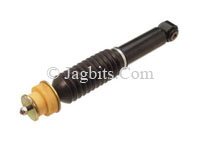By Gary Ilcyn, CEO and Jaguar Enthusiast at Jagbits Inc.
The Jaguar XF, known for its blend of performance, elegance, and advanced technology, owes much of its smooth ride to its rear shock absorbers. These crucial components of the vehicle’s suspension system absorb and dampen the impact from road irregularities, ensuring a comfortable and stable ride. This guide explores the functions, importance, signs of wear, and replacement procedures for the rear shock absorbers in the Jaguar XF.
The Role of Rear Shock Absorbers
Rear shock absorbers in the Jaguar XF are essential for several reasons. They enhance ride comfort by absorbing shocks from uneven road surfaces, thus minimizing passenger discomfort. They also contribute to the vehicle’s handling and stability by controlling the oscillations of the suspension springs, ensuring that the tires maintain proper contact with the road. Additionally, shock absorbers protect other suspension components by reducing wear and tear, thereby extending their lifespan.
Shock absorbers are vital for smoothing out the ride after hitting a bump. Without them, your vehicle would bounce uncontrollably, leading to discomfort and danger. By soaking up energy from road irregularities, they keep tires firmly on the ground, ensuring better handling and braking.

Types of Shock Absorbers
The Jaguar XF boasts top-tier suspension with hydraulic or gas-filled shock absorbers. Hydraulic shocks ensure smooth, reliable rides by using fluid to dampen movement. Gas-filled shocks elevate performance further, blending fluid and pressurized gas to minimize air bubbles and enhance stability.
Hydraulic shock absorbers are budget-friendly and deliver a smooth ride, making them popular in many vehicles. Gas-filled alternatives, though pricier, excel in performance under tough driving conditions and resist fluid aeration, ensuring consistent damping efficiency.
Identifying Worn Shock Absorbers
Recognizing when the rear shock absorbers need replacement is crucial for maintaining the Jaguar XF’s performance and safety. There are several signs to watch for:
Bumpy Ride: A bumpy ride often signals worn-out shock absorbers, the first clue many drivers notice.
Nose Diving: If your car’s front end dips too much when braking, it might mean the rear shock absorbers are failing. This happens because they can’t manage weight transfer properly during stops.
Uneven Tire Wear: Worn shock absorbers can cause tires to wear unevenly due to improper road contact. This uneven wear can lead to premature tire replacement and decreased fuel efficiency.
Leaking Fluid: Visible fluid leaks on the shock absorbers are a clear indication that they need to be replaced. Leaks can occur due to worn seals or damaged shock absorber bodies.
Poor Handling:If your vehicle sways wildly or feels unstable, the shock absorbers could be failing. You’ll notice this especially during turns or on rough roads.
Overlooking these signs can cause major damage to your suspension and compromise vehicle safety. Regularly check your shock absorbers and heed the warnings to avoid expensive repairs and guarantee a smoother, safer ride.
Inspecting Rear Shock Absorbers
Regularly checking your rear shock absorbers can ward off problems. Spot leaks, dents, or damage with a quick look. Push down on the vehicle’s rear; if it bounces oddly, it’s time for new shocks. Listen for strange noises from the suspension—these could be warning signs too.
When inspecting, watch for oil leaks around the shock absorber body or mounts; even a tiny drip signals trouble. Look out for dents or bends that could hamper its performance.
The bounce test is a simple yet effective way to assess the condition of your shock absorbers. Push down firmly on the rear of the vehicle and release it. If the vehicle continues to bounce more than once or twice, the shock absorbers are likely worn and need to be replaced.
Note:
* This article has been peer-reviewed and held to the highest editorial standards.
** Image may not represent actual part.
Replacing Rear Shock Absorbers
Replacing rear shock absorbers in the XF is a technical task best handled by professionals, but understanding the process can be beneficial. Here’s a general outline of the replacement procedure:
First, find a level spot to park and set the parking brake. Secure the wheels with chocks for added safety. Loosen the lug nuts on the rear wheels, then jack up the vehicle and support it with jack stands. Remove the rear wheels to access the shock absorbers. Apply penetrating oil to their bolts for easier removal. Use a socket and wrench to take out both mounting bolts, then carefully extract the old shocks.
Start by positioning the new shock absorbers and hand-tightening the upper and lower mounting bolts. Use a torque wrench to secure them according to the manufacturer’s specs. Reinstall the rear wheels, lower the vehicle, and remove the jack stands. Tighten the lug nuts firmly. Finally, take your car for a test drive to ensure everything works perfectly.
Choosing the Right Shock Absorbers
Choosing the right rear shock absorbers for your Jaguar XF is vital to keep its performance top-notch. OEM parts guarantee a perfect fit and optimal function, tailored precisely for your car. While aftermarket options may provide extra features, they demand careful selection to ensure quality and compatibility.
When selecting shock absorbers, think about your driving style. Performance shocks boost handling but might sacrifice comfort. Opt for top brands with solid warranties for peace of mind and a smoother ride.
Another consideration is the type of driving you do. If you frequently drive on rough or uneven roads, you might benefit from shock absorbers designed for heavy-duty use. Conversely, if you primarily drive on smooth highways, standard shock absorbers will likely suffice.
Keep your Jaguar XF’s ride smooth and thrilling by maintaining top-notch rear shock absorbers. Swiftly address any issues, invest in quality parts, and follow smart maintenance practices. Enjoy a superior driving experience while extending your vehicle’s lifespan.









